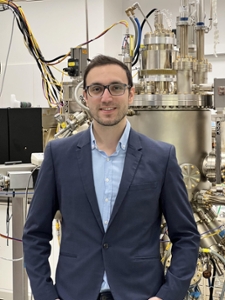OSE Dissertation Defense by Mr. Fatih Furkan Ince on MBE Growth of Sb based alloys using interfacial misfit arrays for MWIR devices
Departmental News

Posted: February 10, 2024
Date: Friday, February 23, 2024
Time: 2:30 PM Mountain Time (US and Canada)
Location: CHTM, Room #103
Dissertation Committee:
Dr. Ganesh Balakrishnan, EPSCoR Director and Electrical and Computer Engineering Department - Committee Chair
Dr. Sang Han, Chair, Chemical and Biological Engineering
Dr Sadhvikas Addamane, Sandia National Labs
Dr. Thomas Rotter, Research Professor, CHTM
Abstract:
Mid-wave infrared (MWIR) detectors are essential for various applications such as medical devices, remote sensing, and spectroscopy. In the MWIR detection, antimonide-based narrow bandgap semiconductors are ideal due to their stronger bonding compared to II-VI’s and better spatial uniformity, scalability and lower cost. InSb infrared focal plane arrays are extensively utilized due to their cut off wavelength of 5.3μm and the operation wavelength can be extended to long-wave infrared (LWIR) spectrums using type-II superlattices such as InAs/InAsSb or bulk InAsSb grown metamorphic buffers. However, the absence of suitable binary substrates between 6.09 Å and 6.47 Å has led to the exploration of metamorphic buffers using InGaSb and AlInSb ternary alloys. In the literature, antimonide based step graded and linearly-graded buffers are widely studied. Metamorphic buffers often require thicknesses over 4μm to achieve the desired lattice constant, which involves challenges in repeatability and cost-efficiency for III-V based MWIR detectors. To create cost-effective and easily manufacturable III-V based MWIR detectors, interfacial misfit dislocation (IMF) arrays can be used to achieve fully relaxed buffers for a lattice constant of interest for antimonide alloys.
Biography:
